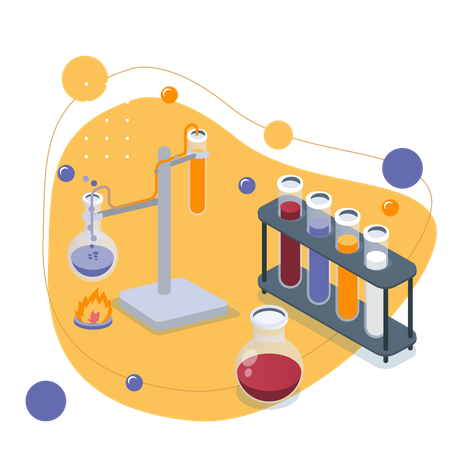Strong vs Weak Acids (GCSE Chemistry)
Strong vs Weak Acids
Strong and Weak Acids
Ionisation
- Acid strength can vary. Acids dissolve in water to produce hydrogen ions (H+ ). We can classify the acids into strong and weak, depending on the amount of H+ ions they produce in solution.
- Strong acids are completely ionised. If an acid is strong, that means it will be completely ionised in an aqueous solution. All the particles dissociate to release H+ ions. Strong acids are hydrochloric acid, nitric acid and sulfuric acid.
HCl → H+ + Cl–
- Weak acids are only partially ionised. If an acid is weak, that means it will be partially ionised in an aqueous solution. Only some particles dissociate to release H+ ions, meaning this reaction is a reversible reaction. Weak acids are carbonic acid, citric acid and ethanoic acid.
CH3COOH ⇌ CH3COO– + H+
This shows that the dissociation of weak acids form an equilibrium, which lies very much on the left.
Acids and pH
- Strong acids have lower pH. The stronger an acid is, the lower it’s pH will be. pH measures the concentration of H+ present in a solution. Therefore, the more H+ present, then the more acidic a solution is, so the closer it’s pH is to 0.
- Concentration links to molecule number. The concentration of an acid is the number of acid particles present in a solution. The strength of an acid is the number of H+ ions. When the concentration of an acid is increased, this will lower the pH (closer to 0).
Measuring Ion Concentration
The pH scale is a logarithmic scale. This means that for every point decrease in pH (such as a change of pH from 4 to 3), the concentration of H+ ions increases by a factor of 10. This follows the rule that acids have a pH closer to 0.
Similarly, if pH changes by 3 points (5 to 2) then the concentration of H+ ions will increase by 103 = 1000.
You can use this formula to work out the relationship between the pH and concentration of H+ ions.

Dilute and Concentrated Solutions
Solutions can be described as dilute or concentrated. Concentration simply looks at how many solute particles there are. This means that:
A dilute solution will have a small amount of dissolved solute.
A concentrated solution will have a large amount of dissolved solute.
Strong acids are those that dissociate fully in water to produce hydrogen ions, while weak acids are those that dissociate partially in water to produce hydrogen ions. The strength of an acid is determined by the extent to which it dissociates into ions.
The main difference between strong and weak acids is the extent to which they dissociate into ions in solution. Strong acids dissociate completely, producing a high concentration of hydrogen ions, while weak acids dissociate partially, producing a lower concentration of hydrogen ions. This difference is reflected in the strength of the acidic properties of the solution.
Examples of strong acids include hydrochloric acid (HCl), sulfuric acid (H2SO4), and nitric acid (HNO3). Examples of weak acids include acetic acid (CH3COOH), citric acid (C6H8O7), and carbonic acid (H2CO3).
The strength of an acid can be measured using a variety of techniques, including titration, pH measurement, and conductivity measurement. These techniques allow us to determine the concentration of hydrogen ions in solution and to compare the strengths of different acids.
The distinction between strong and weak acids is important in many real-world applications, including in the food industry, the pharmaceutical industry, and in environmental science. For example, in the food industry, weak acids are used as food preservatives because they prevent the growth of harmful bacteria, while in the pharmaceutical industry, strong acids are used as active ingredients in some drugs because of their powerful effects.
The study of strong and weak acids is closely related to other areas of chemistry, such as thermodynamics, chemical equilibria, and electrochemistry. Understanding the properties and behavior of acids is essential for studying these fields and for advancing our understanding of chemical processes.
Understanding the difference between strong and weak acids is important in chemistry because it helps us understand the behavior of acids in solution and their interactions with other substances. This knowledge is essential for many practical applications and is critical for advancing our understanding of chemical reactions and processes.






Still got a question? Leave a comment
Leave a comment